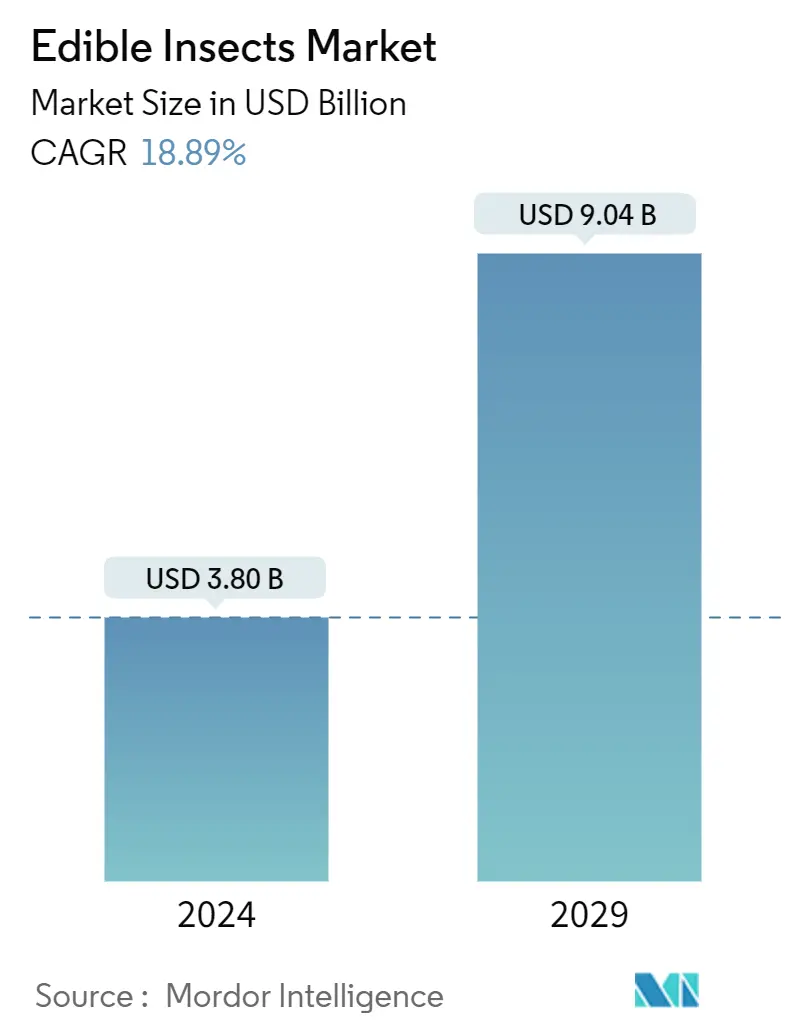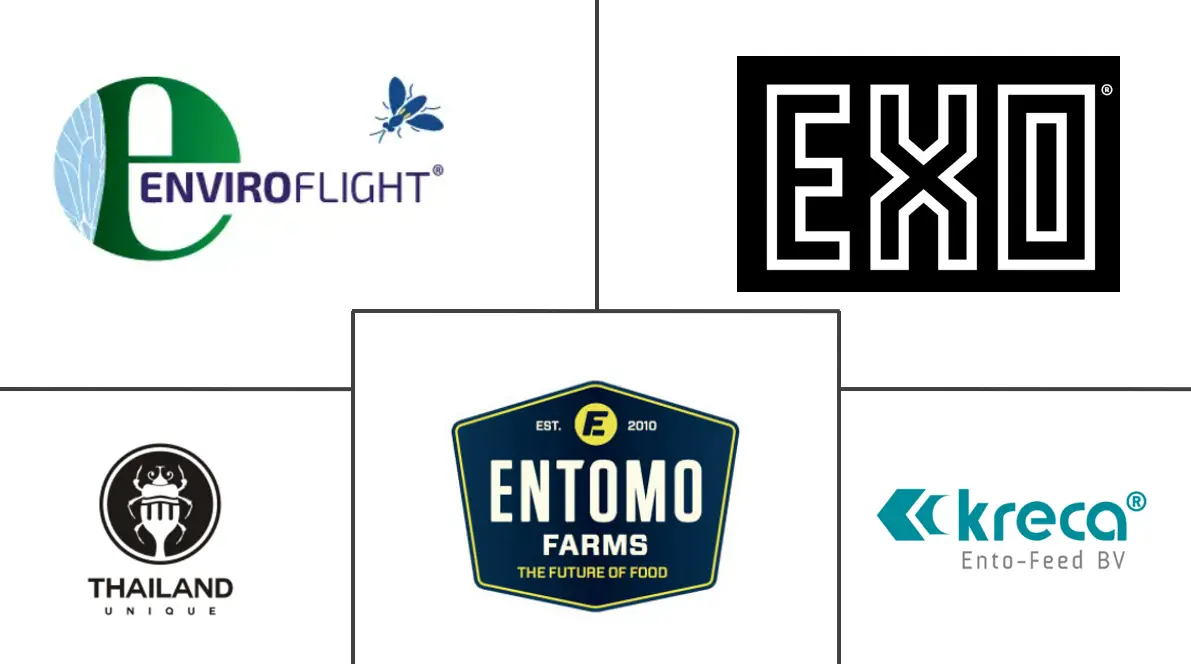Market Size of Edible Insects Industry

| Study Period | 2019 - 2029 |
| Market Size (2024) | USD 3.80 Billion |
| Market Size (2029) | USD 9.04 Billion |
| CAGR (2024 - 2029) | 18.89 % |
| Fastest Growing Market | Asia-Pacific |
| Largest Market | Europe |
Major Players
*Disclaimer: Major Players sorted in no particular order |
Need a report that reflects how COVID-19 has impacted this market and its growth?
Edible Insects Market Analysis
The Edible Insects Market size is estimated at USD 3.80 billion in 2024, and is expected to reach USD 9.04 billion by 2029, growing at a CAGR of 18.89% during the forecast period (2024-2029).
- Entotarians (one whose diet includes insects but no other meats) is a novel concept that came into existence as a problem solver to feed the estimated 10 billion people that the world will have in some years. The growing number of entotarians has intensified the demand for edible insects worldwide.
- In addition, due to consumer desire for more sustainable and alternative food and feed products, the use of edible insects has been gradually developing. For instance, according to recent estimates, approximately 2,111 species of insects are consumed in about 140 countries, with entomophagy documented around the world like in Asia, Australia, Africa, and the Americas are already consumed regularly by people and domestic animals across the globe owing to their high protein, healthy fat, mineral, and vitamin content.
- The consumption of insects in the tropical and sub-tropical Asian regions from various insect groups in these regions. Insect-eating habits are not only associated with nutritional aspects but are also closely related to socio-cultural practices and religious beliefs. Edible insects are also used to complement diets with rich protein sources and ecologically sustainable sources of the region's food.
- According to the FAO Edible Insects from a Food Safety Perspective, Report 2021, there are some regulatory frameworks for edible insects in distinct countries to govern the production and commercialization of insects in food and feed supply chains. For instance, in the United States, in the year 2020, the food uses of edible insects, insect parts, or derivatives fall within the oversight of the United States of America Food and Drug Administration (FDA). As such, edible insects and insect-based food products must comply with the Federal Food, Drug, and Cosmetic Act (FD&C Act) and its implementing regulations. For example, if insects and insect derivatives are to be used as food or color additives, these uses must be approved by the FDA.
- Many government associations are developing numerous projects and initiatives to focus on investments, research, and industry partners to escalate the edible insects business globally. For instance, in October 2022, the Australian Centre for International Agricultural Research (ACIAR) collaborated with AgriFutures Australia and the International Centre for Insect Physiology and Ecology (ICIPE) to create a new research hub launched in Australia, which derives the emerging insect technology with industries using insects as human food, animal feed, fertilizer and other products such as oil.
